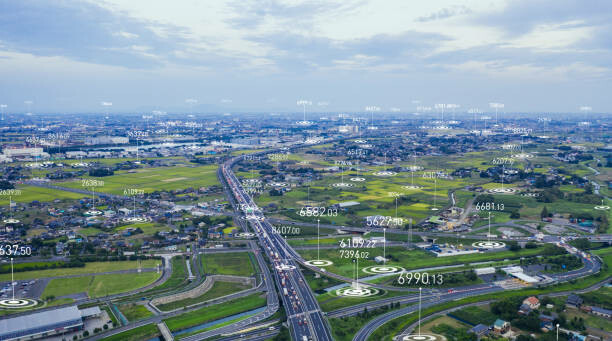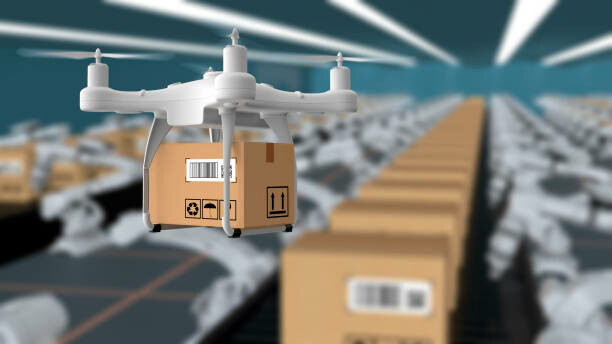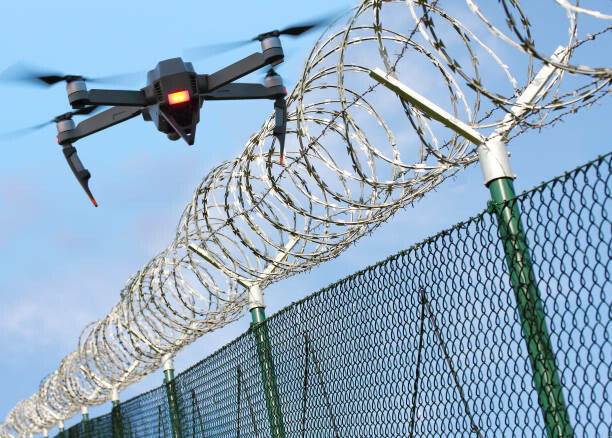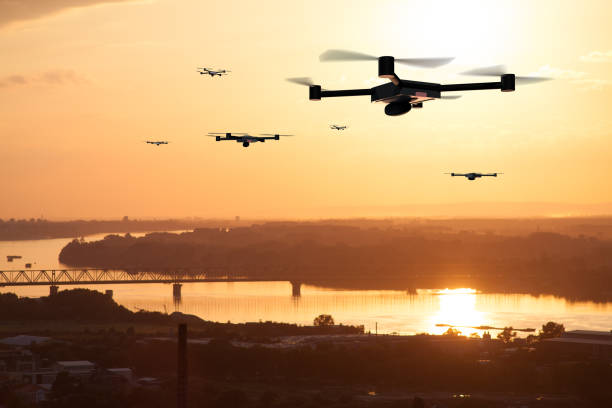Professional drone piloting has taken off as a legitimate and lucrative business. According to DroneU, a drone pilot can now make up to $1,200 per day. Though, salaries can vary based on location and employer.
When we explored this topic in 2019, some of the fastest-growing areas for UAV pilots included real estate photography and movie making.
There are still plenty of jobs to be had in those fields, but as commercial drones have become more common across various sectors, new opportunities have emerged.
Here are five industries where the demand for drone pilots is rapidly increasing in 2022:
1. Surveying & Mapping
Drones may never fully replace on-the-ground surveying. However, they can provide hundreds of aerial images and thousands of data points in a fraction of the time at a fraction of the cost. They can also access areas inaccessible by foot. These are some key reasons why more and more survey and mapping companies are turning to drone pilots.

UAV images and data are used with specialized software to create 2D and 3D maps and models. These include, but are not limited to: orthomosaic maps to measure topography and infrastructure; Digital Surface Models (DSM) for landscape and city planning; Digital Terrain Models (DTM) for geological applications and land-use studies; and point cloud surveys for internal and external scans of buildings.
Some drones are accurate down to less than half an inch. Though, the accuracy of your images and measurements will vary depending on your drone type, its components, and your camera’s resolution. If you’re considering taking your drone piloting skills into the surveying and mapping fields, investing in high-quality equipment could set you apart from the competition.
2. Drone Delivery

The number of retailers, e-commerce, and shipping companies that deploy drone delivery fleets is quickly increasing.
Based on estimates from Optimumroute.com and the US Department of Transportation, last mile drone delivery (from a distribution center to a final destination) is 90% cheaper than using traditional delivery vehicles. It’s also faster and can reduce carbon emissions by up to 99%.
You won’t find drone delivery everywhere, and the FAA restricts the size of a package a drone can carry. However, UAV delivery of small boxes and time-sensitive items like food and medicine is becoming more common by the day, especially in urban areas.
Walmart, Alphabet (Google’s parent company), UPS, and Flytrex are some of the leading early adopters, and Amazon Prime Air is closing in on lift-off. So, opportunities for drone delivery pilots are on the rise.
Be aware, though: you need special FAA certification if want to pilot delivery drones.
3. Construction
Drones can be used in all phases of construction, from pre-site surveys and planning to post-construction marketing. They’re especially useful on large-scale commercial projects that span a wide area or are many stories high.
Beyond surveying and mapping, which we’ve already discussed, UAVs can be used during construction to measure excavation depths and provide real-time progress reports on the building process. These can be useful to help builders stay on schedule and budget.
Drones can also carry out inspections in difficult to access and dangerous areas to improve efficiency and site safety. They can even be used to monitor sites to make sure laborers are keeping busy and equipment and other assets, like tools and supplies, are secure.
After construction is complete, drone pilots may be called on for thermal imaging to help assess potential electrical issues and hot and cold spots within a building. You may also be asked to take promotional photos and videos for marketing and advertising materials.
4. Inspection
In addition to construction, drones are increasingly being used for inspections in a number of fields, including agriculture, industrial, utilities, energy, and mining.
UAVs equipped with GPS and thermal cameras can monitor crops and livestock to identify changes and issues with soil, irrigation, pests, and more. This can help farmers address problems quicker and run their farms more efficiently.
Drones can also eliminate the need to send human inspectors up scaffolding, chimney stacks, and cell phone towers. Not only does this reduce risk and liability for utility companies and on industrial sites, it also saves businesses time and money while helping them more accurately identify issues that may go unnoticed by human inspection.
Those benefits are also seen in the oil, gas, and mining industries, as drones can provide precision imagery to assess the safety of mines, oil rigs, and pipelines and identify areas in need of repair.
5. Security
Many businesses in 2022 use drones to monitor their facilities and guard their perimeters. Drones are quick to deploy and can cover more ground and angles than traditional cameras, often with more precision.
According to a Global Security Exchange interview with UASidekick LLC owner Jason Cansler, “Drones can also be sent out as a response mechanism before [security] personnel [arrive]… so people know what they’re getting into before they get there.” This is a common use of security drones in a military application, too.
UAVs are also becoming more prevalent in highway, coastline, and border surveillance. They can help authorities by sending real-time feeds to remote operators to help identify illegal activity such as border jumping, smuggling, and trafficking.
Security drones are even becoming common at big events, like festivals.

What Industry Will You Fly Into?
You need FAA certification to pilot commercial drones, and some industries, like drone delivery, require a bit more paperwork than others. Having the proper licenses and permits in place will make you more appealing to potential employers in whichever field you choose to fly.
That said, the opportunities you have may be dictated by your location. A place where agricultural inspections are in high demand may not have a need for delivery drones. Similarly, you may find more security piloting gigs in urban areas. However, surveying and mapping is an area you’re likely to find no matter where you go.
A recent report indicates that the global market for drone services was $13.9 billion in 2021. It’s expected to rise up to $40.7 billion by 2026. Realizing this potential requires a commitment from professional drone pilots to providing services to teams and organizations in the industries mentioned above. Doing so could result in huge short and long-term payoffs.
















Comments